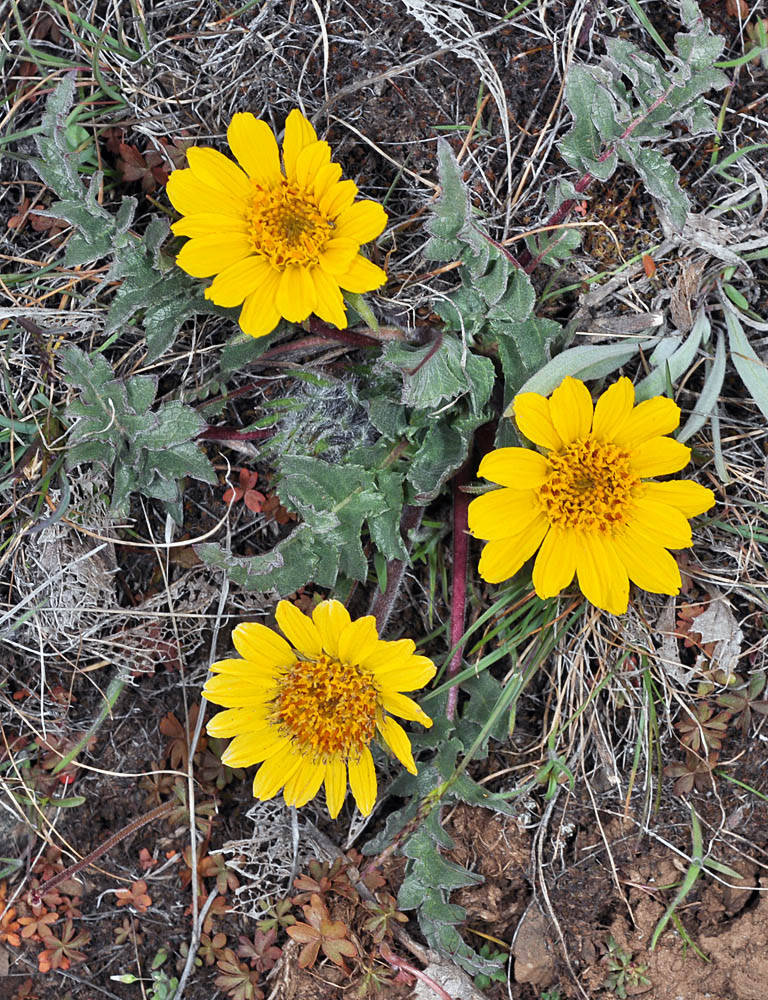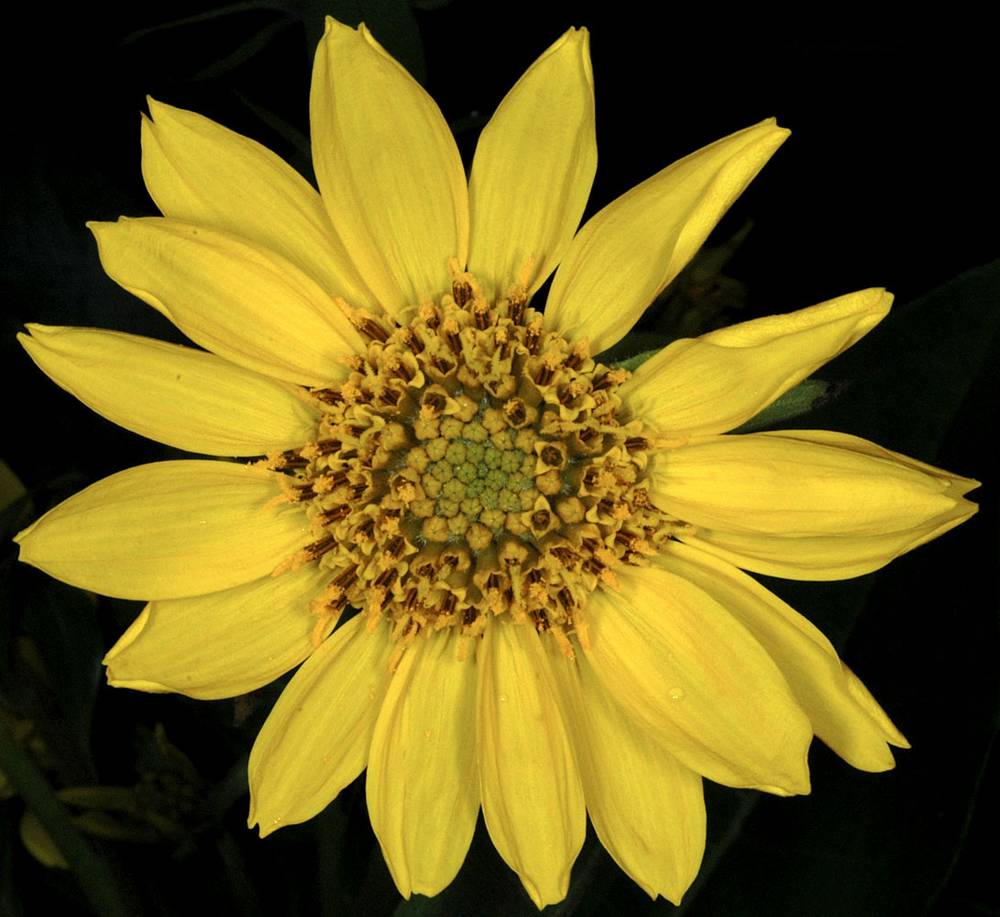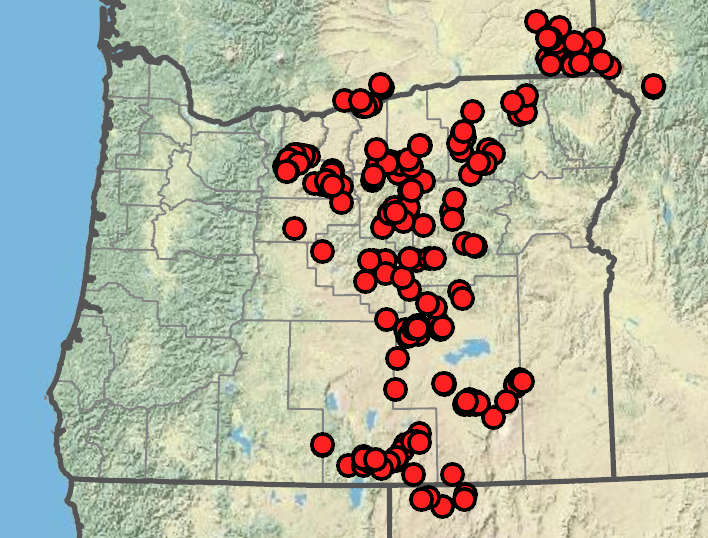Balsamorhiza serrata
Balsamorhiza deltoidea
serrate balsamroot
deltoid balsamroot
5–34 cm, sparsely villous-tomentose; from single taproot.
forming clumps, 14–54 cm, green, villous-hirsute, with shorter, glandular hairs.
ovate-lanceolate, undivided to pinnatifid, rarely with some leaves pinnately compound;
margins sharply serrate;
tips apiculate;
surfaces sparsely hispid;
basal leaves in 1–few rosettes;
blades 4.5–15 × 2–5.5 cm;
pinnae (when present) 4–11 mm wide;
petioles 1–9(13) cm, often one or more bract-like basal leaves present;
cauline leaves of 1 pair (when present); opposite;
blades 1–4(5.5) × 0.6–1.5 cm;
petioles 2–5.5(6.5) cm.
simple;
margins entire to toothed;
teeth rounded and apiculate;
surfaces abaxially sparsely hirsute, adaxially sparsely hirsute, villous-hirsute on veins;
basal leaves in multiple rosettes;
blades deltate, 7.5–27 × 6–16 cm, bases cordate or hastate;
petioles 10–27 cm;
cauline blades 3–7.5 × 1.1–2.7 cm;
petioles 0–8.5 cm.
with 1 terminal head.
with 1 larger; terminal head and 0–2 smaller; axillary heads;
peduncles 1–12 cm.
13–15 × 10–30 mm.
terminal 10–15 × 20–33 mm; axillary 8–10 × 11–17 mm.
8–21, yellow;
rays 13–24 × 4–9 mm.
deciduous, 11–21 on large heads, 6–9 on small heads, yellow;
rays 18–35 × 4–17 mm.
~8 mm.
5–8 mm.
linear-lanceolate, 11–18 × 2–4 mm;
tips acuminate, sparsely to densely villous-tomentose.
ovate, 10–32 × 4–9 mm, villous; more densely so at bases; outer phyllaries often lanceolate; longer than inner.
6–7 × 1.5–2 mm, glabrous.
9 × 1.5 mm, glabrous.
11–12 mm.
~7 mm.
=38.
Balsamorhiza serrata
Balsamorhiza deltoidea
Dry open areas, serpentine. Flowering Apr–Jun. 600–2100 m. BR, BW, Col, ECas, Lava. CA, NV, WA. Native.
Balsamorhiza serrata is distinct among members of the genus Balsamorhiza in generally having simple leaves with serrate margins and tapered (not sagittate) bases. Some plants have pinnately divided leaves. Further work may show that these plants are actually hybrids between B. serrata and B. hookeri or B. hispidula. Balsamorhiza serrata is known to hybridize with B. sagittata.
Grasslands, pine or oak woodlands. Flowering Mar–Jul. 50–2200 m. Casc, ECas, Sisk, WV. CA, WA; north to British Columbia. Native.
Balsamorhiza deltoidea grows west of the Cascade Range and intergrades with B. careyana in the Cascades and along the Columbia River. (See discussion under B. careyana.) It also hybridizes with B. sericea in Josephine County. Hybrids between Balsamorhiza deltoidea and B. hookeri have been given the name B. × terebinthacea but are not expected to be found in Oregon, given that the ranges of the parental species do not overlap here. The specific epithet refers to the deltoid shape of the leaves.
Abigail (Abby) Moore
Abigail (Abby) Moore
- Local floras:
BC,
CA,
OR,
WA
- Local Web sites:
CalFlora,
CalPhotos,
Flora NW,
PNW Herbaria,
Turner Photog.
WildflowerSearch
iNaturalist (observations)
USDA Plants Database
- LBJ Wildflower Center
- SEINet
- Plants of the World Online
- Encyclopedia of Life
- Wikipedia
- Google Image Search





